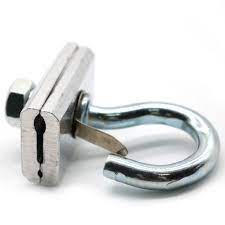
Span clamps helps to support and secure the conductors that carry electrical power across a span of distance between two towers. It helps to maintain the stability and reliability of the line. It is from materials that are durable and strong like steel, aluminum or an alloy. The corrosion-resistant span clamps excel in coastal and humid environments of Southeast Asia. This is to ensure longevity and reliability. Common types of span clamps include suspension clamps, dead-end clamps and armor rod clamps. They work in applications such as suspension points, dead ends, angles and bends, crossings, vibration damping and underground cable transitions.
Key features of span clamp
The span clamp has various features that make them a popular option in the transmission industry. This is because they help to ensure the secure attachment, support and reliable performance of conductors. The features vary depending on the manufacturer, design and intended use. The following are the key features of the span clamp.
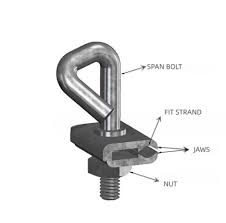
- Secure grip – span clamps securely hold the conductor in place to prevent it from slipping or sagging excessively. It has gripping mechanisms such as grooves or jaws.
- Corrosion resistance – the exposure to various environmental conditions such as moisture humidity and salt exposure requires the corrosion resistant materials. These materials include galvanized steel or aluminum alloys.
- Vibration damping – damping the vibrations on the conductors helps prevent fatigue and damage to the conductor.
- Compatibility – the clamp should be compatible with the specific type and size of conductor used in the transmission line.
- Durability – span clamps exposed to various environmental conditions need to withstand the test of time and maintain their functionality.
- Load capacity – the clamps should withstand mechanical loads and stresses placed on the conductor. These include weight, wind forces and tension.
- Electrical isolation – span clamps provide a degree of isolation between the conductor and the tower or other components.
- Ease of installation – a span clamp should be easy to install and maintain. This is to reduce downtime during maintenance operations.
Selection and maintenance of span clamp
There are various factors to consider when selecting the types of span clamps to use in the various applications. The factors include conductor type and size, transmission line parameters, environmental conditions, vibration damping, electrical isolation, corrosion resistance, standards and cost considerations.The following is a basic installation process of the span clamps.
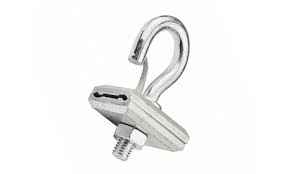
- Safety precautions – ensure that you have all the necessary safety measures in place. This is including personal protective equipment and adherence to safety guidelines.
- Prepare tools and equipment – gather all the tools and equipment needed. These include span clamps, fasteners, torque wrenches, insulating materials.
- Inspect clamps – inspect each span clamp for any defects or damage and ensure they are the correct type for the specific conductor type and size.
- Conductor preparation – prepare the conductor by cleaning its surface. This is to ensure it is properly aligned for installation.
- Positioning – place the clamp at the desired location on the conductor. This should be according to the tower configuration, angle or dead-end point.
- Alignment and clearance – ensure the conductor is properly aligned within the clamp. Also, ensure suitable clearance from the tower.
- Tension adjustment – make tension adjustments and consider factors such as temperature variations and wind loads.
- Torque verification – check the torque on the fasteners using a torque wrench. This is to ensure they are tight to the manufacturer’s specifications.
- Quality check – perform a thorough quality check of the installation. This helps to ensure that the clamp is securely attached, positioned and all safety measures in place.
- Record keeping – maintain accurate records of the installation. This is including the location, date, type of clamp used and any specific details.
- Final inspection – conduct a final inspection to verify that the span clamp installs correctly. It should also meet all safety and operational requirements.
Maintenance and inspection in Southeast Asia
Span clamps in Southeast Asia requires regular maintenance and inspection. This is due to the challenges posed by the diverse environmental conditions. This helps to ensure the reliability and the safety of overhead transmission lines. The following is a guide to effective maintenance and inspection practices.
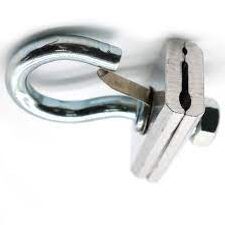
- Establish a regular routine inspection schedule based on the specific conditions of the region.
- Regularly inspect span clamps for signs of damage, corrosion, wear or misalignment. Check for rust, deformation, loose fasteners and any visible anomalies.
- Apply the suitable anti-corrosion coatings and consider using corrosion-resistant materials during replacements.
- Inspect any integrated vibration dampers for wear or damage. This helps to prevent conductor fatigue in windy conditions.
- Ensure that the conductors are properly aligned within the clamps. Maintain the recommended clearances from the tower and other components.
- Regularly check and adjust tension levels to account for temperature variations and changes in wind loading.
- Maintain detailed records of inspections, repairs, replacements and any corrective actions taken.
Comparative analysis of span clamps in Southeast Asia
A comparative analysis includes evaluating several factors that help to find the perfect fit for your application. It includes various factors such as materials, design features, corrosion resistance and suitability for specific conductor type. The process involves conducting fresh research for up-to date information for proper selection. The following is a basic approach to conduct the comparative analysis for the span clamp in Southeast Asia.
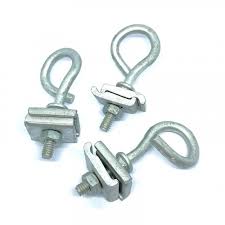
- Define the criteria to guide your analysis such as corrosion resistance, material suitability, load capacity, adaptability, vibration damping and electrical isolation.
- Collect data on different types of span clamps with their material, design, features and manufacturers available in the market.
- Research the specific environmental conditions in Southeast Asia. This is including humidity, salt exposure, temperature variations and wind loads.
- Check the corrosion resistance of each type of clamp material. This is depending on the humid and coastal conditions prevalent in Southeast Asia.
- Compare the load-bearing capabilities of different clamps. Assess their suitability for different tension levels.
- Determine the ability of insulated span clamps to provide effective electrical isolation. Consider the regions vulnerability to lightning and storms.
- Compare the initial costs, maintenance requirements and potential lifecycle costs of different types of span clamps.
- Research the reputation of manufacturers and consider their compliance with standards, customer feedback and after-sales support.
- Compare the initial costs, maintenance requirements and potential lifecycle costs of different types of span clamps.
Certifications and standards of span clamps in Southeast Asia
Certifications and standards for span clamps help to ensure the quality, safety and reliability. There are also other factors to evaluate about span clamps for use. These include manufacturer’s claim, consultation, documentation and testing. The following are the common certifications and standards of the span clamps in Southeast Asia.
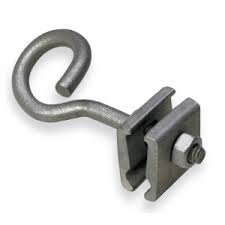
- International electrotechnical commission (IEC) – these standards provide requirements for cable cleats used in conjunction with span clamps to secure cables and conductors.
- ANSI – This standard specifies requirements for insulating devices. This includes insulators used in conjunction with span clamps.
- IEEE – this standard provides valuable information om conductor installation.
- ASTM – this standard evaluates the corrosion resistance of materials. This can be relevant for assessing the corrosion performance of span clamps.
- Local and regional standards – countries like Singapore, Malaysia, Thailand and Indonesia have their own standards.
Regional market for span clamps in Southeast Asia
There are several factors that shape the regional market for span clamp in Southeast Asia. These includes the regions growing infrastructure needs, urbanization, power demand and environmental conditions. Span clamp manufacturers have the opportunity to provide products that meet the unique challenges and requirements of Southeast Asia’s transmission networks. The following are the common market dynamics for the span clamp.
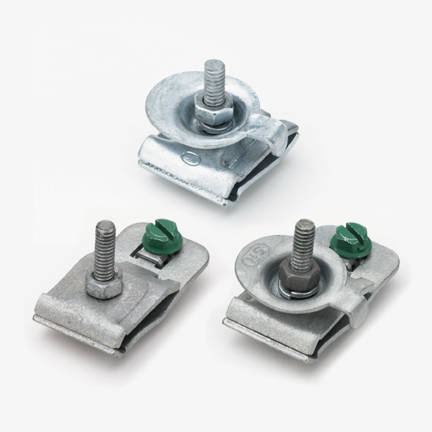
- Power demand and growing infrastructure – the rapid economic growth and urbanization includes the need for improved power infrastructure.
- Renewable energy adoption – sources such as solar and wind power requires robust transmission networks. This includes the use of span clamps.
- High humidity and coastal exposure – the humid and coastal climate presents challenges related to corrosion and environmental degradation of transmission line components.
- Local manufacturing and imports – some of the southeast Asian countries depend on foreign imports. This creates a mix of domestic and international suppliers in the market.
- Demand for quality and reliability – the demand for high-quality requires reliable span clamp. The clamps should withstand the environmental challenges of the region.
Frequently asked questions
Span clamps help in maintaining the stability, reliability and safety of transmission lines. This is by securely holding conductors, preventing sagging and accommodating environmental conditions.
The choice of span clamps depends on factors like conductor type, tower configuration, tension levels and environmental conditions.
Span clamps are from materials like steel, aluminum, aluminum alloy or composites that offer strength, corrosion resistance and weight.